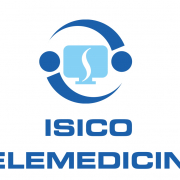The Interrater and Intrarater Reliability of the Humeral Head Ossification System and the Proximal Femur Maturity Index Assessments for Patients with Adolescent Idiopathic Scoliosis
Every year, the Italian Scoliosis Study Group selects the best published papers on conservative spine treatment from the global scientific literature.
Here is the abstract from one of these papers.
The Interrater and Intrarater Reliability of the Humeral Head Ossification System and the Proximal Femur Maturity Index Assessments for Patients with Adolescent Idiopathic Scoliosis
Qing-da Lu, Chen-Xin Liu, Shuai Yang, Bo-Hai Qi, Huan-An Bai, Ji-Ning Qu, Ye Yang, Xiao-Hui Jin, Ming Yang, Fei Su, Ya-Ting Yang, Qiang Jie
Front Pediatr. 2023 Mar 9;11:1131618.doi: 10.3389/fped.2023.1131618. eCollection 2023.
Abstract
Background: Skeletal maturity can evaluate the growth and development potential of children and provide a guide for the management of adolescent idiopathic scoliosis (AIS). Recent studies have demonstrated the advantages of the Humeral Head Ossification System (HHOS) and the Proximal Femur Maturity Index (PFMI), based on standard scoliosis films, in the management of AIS patients. We further assessed the HHOS and the PFMI method’s reliability in the interrater and intrarater.
Methods: The data from 38 patients, including the humeral head and proximal femur on standard scoliosis films, were distributed to the eight raters in the form of a PowerPoint presentation. On 38 independent standard spine radiographs, raters utilized the HHOS and PFMI to assign grades. The PPT sequence was randomly changed and then reevaluated 2 weeks later. For every system, the 95% confidence interval (95% CI) and intraclass correlation coefficient (ICC) were calculated to evaluate the interrater and intrarater reliability.
Results: The HHOS was extremely reliable, with an intraobserver ICC of 0.802. In the first round, the interobserver ICC reliability for the HHOS was 0.955 (0.929-0.974), while in the second round, it was 0.939 (0.905-0.964). The PFMI was extremely reliable, with an intraobserver ICC of 0.888. In the first round, the interobserver ICC reliability for the PFMI was 0.967 (0.948-0.981), while in the second round, it was 0.973 (0.957-0.984).
Conclusions: The HHOS and PFMI classifications had excellent reliability. These two methods are beneficial to reduce additional exposure to radiation and expense for AIS. There are advantages and disadvantages to each classification. Clinicians should choose a personalized and reasonable method to assess skeletal maturity, which will assist in the management of adolescent scoliosis patients.
Keywords: Humeral Head Ossification System; Proximal Femur Maturity Index; adolescent idiopathic scoliosis; reliability; skeletal maturity.
© 2023 Wang, Lu, Liu, Yang, Qi, Bai, Qu, Yang, Jin, Yang, Su, Yang and Jie.





Leave a Reply
Want to join the discussion?Feel free to contribute!